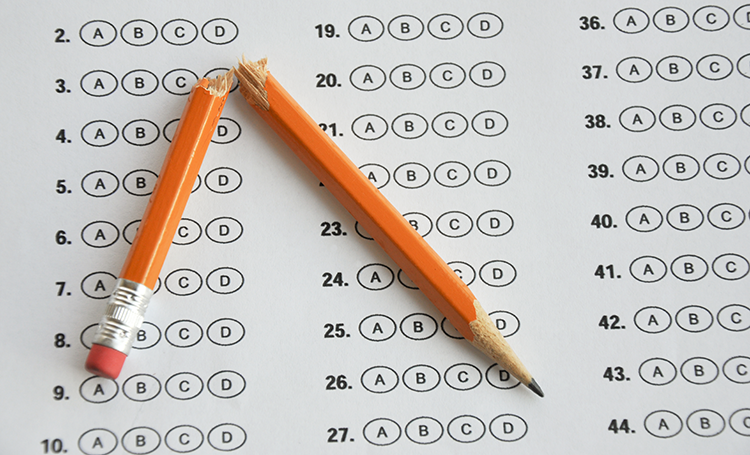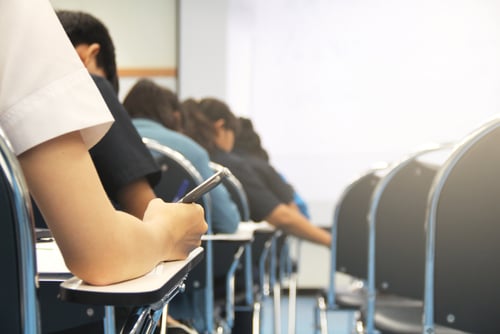Revised bar pass standard may be less absolute than some thought

Image from Shutterstock.com.
When the ABA in May released public notice that 10 law schools were out of compliance with a recently tightened up bar pass standard, there was some surprise as to which school didn’t make the list.
Revised in May 2019 amid much criticism, Standard 316 requires a two-year pass rate of at least 75%. Shortly after the new version was put into place by the council of the ABA’s Section of Legal Education and Admissions to the Bar, the section published a guidance memo stating that compliance would be based on 2017 graduates.
Despite that clear standard, it seems to be less rigid than some feared. For instance, Faulkner University’s Thomas Goode Jones School of Law, with a 62.5% pass rate for 2017 graduates, was not sanctioned by the council last month. According to a May 20 council decision Charles B. Campbell, the dean of Faulkner Law, shared with the ABA Journal, the school demonstrated compliance by showing that its class of 2019 bar passage rate will not fall below 79%, and its interim ultimate bar pass rate for its class of 2018 is 75.6%.
Bill Adams, managing director of ABA accreditation and legal education, confirmed for the ABA Journal that law schools with bar pass rates below 75% for 2017 graduates can demonstrate compliance if they have locked-in pass rates at or above 75% for 2018 or 2019 graduates.
Looking at subsequent bar passage rates rather than a single focus on a prior year is a sensible and fair approach to determining Standard 316 compliance, say some academics.
“I think you want the schools to be able to show they made some improvements,” says Derek Muller, a professor at Pepperdine University School of Law, who also writes at Excess of Democracy.
He adds that in 2014, when law schools were making admissions decisions for the class of 2017, they didn’t know the bar pass standard would change.
 Image from Shutterstock.com.
Image from Shutterstock.com.
Indeed, the earlier version of the standard allowed all sorts of exceptions—including having a 75% pass rate for all graduates over the five most recent calendar years, or at least three of those five years.
“One of the main premises behind rewriting Standard 316 was to make it easier to understand, and in some ways it feels more certain,” says Aaron Taylor, executive director of AccessLex’s Center for Legal Education Excellence.
In June 2019, the section published a managing director’s guidance memo about the revision. If a law school doesn’t have a 75% pass rate for the class of 2017 and cannot demonstrate a pass rate of at least 75% for the class of 2018, the council can impose sanctions. If the pass rate continues to be below 75% for the class of 2019, ABA accreditation could be withdrawn.
However, a school demonstrating “good cause” could justify a time extension beyond the two-year period, according to the memo. Examples given include temporary circumstances a law school can’t control, academic transfers and a school’s effort to provide broader access to legal education, coupled with a showing the school maintained academic rigor.
Taylor is interested in how the good-cause arguments will be handled.
“If law schools can’t show a 75% pass rate, I think they will likely talk about programming they have in place for graduates as well as repeaters,” he says.
Also, he mentions three law schools with public notice about Standard 316 noncompliance: the University of the District of Columbia David A. Clarke School of Law, Florida A&M University College of Law and Western Michigan University Thomas M. Cooley Law School. UDC and Florida A&M are public historically black institutions, and at Cooley, 500 of the law school’s 1,156 students identify as minorities, according to its Standard 509 Information Report.
Additionally, two of Puerto Rico’s three law schools, Inter American University of Puerto Rico School of Law and Pontifical Catholic University of Puerto Rico School of Law, received noncompliance notices.
If those schools can’t show a 75% bar passage rate in the next two years, Taylor says, they will likely discuss their missions such as getting more people of color in the legal profession, and if possible a favorable trend line in bar passage rates.
Some of the 10 law schools receiving public notice for Standard 316 noncompliance told the ABA Journal that following the council’s compliance determinations, they now have pass rates at or above 75% for 2018 and 2019 graduates.
That includes South Dakota School of Law. Neil Fulton, its dean, says of the school’s 47 graduates class of 2019 graduates, 43 have taken the bar, 37 passed and the worst-case scenario for its ultimate bar passage rate is 78.7%. Of the class of 2018’s 73 graduates, 67 have taken a bar and 53 have passed so far. The current 2018 bar passage rate is 79%, Fulton explains, but it could go as low as 72.6%.
If a law school is within striking distance of a 75% pass rate, the council might want to consider being flexible, says Randall Shepard, a former Indiana Supreme Court chief justice and a former council chair.
“I would try not to have the future of a law school determined by whether a single individual passed a bar exam or didn’t. The real issue for students, and that’s who we’re worried about, is was the legal education adequate. That’s the whole idea of accreditation,” he says.
Alternatively, having a cleanly written standard based largely on data can be more clearly applied, according to Mueller.
“There’s none of this ‘substantial compliance,’ or other weasel words that might creep in, and schools can be laser-focused on getting a 75% pass rate,” he says.



